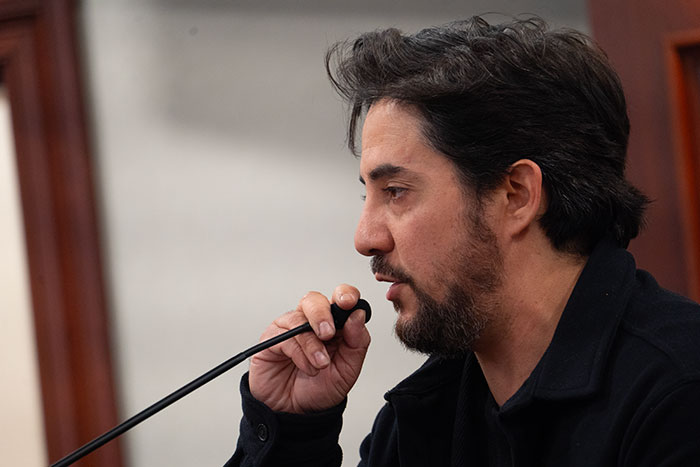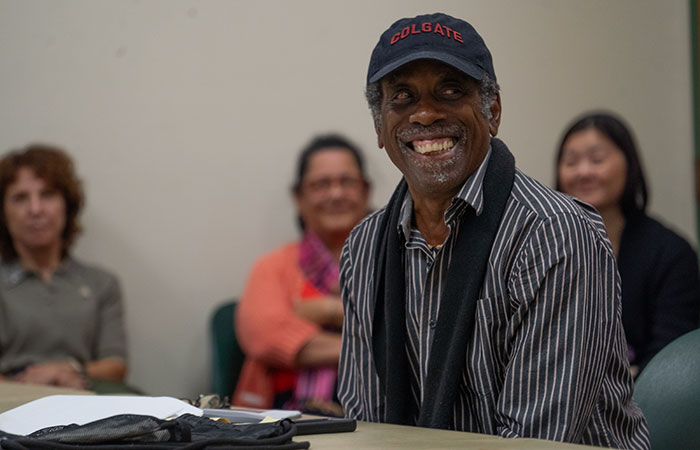Council to establish five voting districts, but no at-large mayor
The Claremont city council is keeping their districts at five, and will not have an at-large mayor.
The council unanimously decided to keep the city council at five seats, as well as keeping a rotating mayor, during Thursday night’s special meeting in the council chambers. The meeting was the second of five public hearings regarding Claremont’s transition to by-district elections.
The idea of additional city council districts came up during last Tuesday’s city council meeting, where planning commissioner Richard Rosenbluth and Sue Schenk both advocated for it, claiming that it would better represent Claremonters. Resident Jennifer Nesslar at the January 8 meeting also brought up an at-large mayor, where everyone in town would vote a standalone mayor in addition to four districted councilmembers.
The city has been holding meetings since November 2018 about the move to by-district elections, ever since the city got wind that they could be sued for violating the California Voting Rights Act (CVRA) by having at-large elections.
To send a demand letter, a law firm or group has to find any evidence of racially polarized voting, meaning the candidate of choice for a city’s racial minority is overshadowed and defeated by the racial majority’s candidate of choice.
As Councilmember Ed Reece remarked at one point in the meeting, “The bar is set so low, I could trip over it.”
Since then, Claremonters have been invited into the process, making public comments and attending workshops on how to draw their own districted maps to send to the city for consideration.
Residents have until January 22 to submit a map, and the maps will be revealed on January 28, seven days before the third public hearing on February 4. Doug Johnson of NDC told the council Thursday that if someone has an objection to a map or is inspired to draw his or her own after January 28, they can do so, but it can’t be considered until the February 12 hearing.
Alan Fenstermacher of Rutan & Tucker noted the city would have a lower chance of being served with a CVRA suit, ballparking the estimate at around 25 percent chance.
During public comment, resident Andy Winick spoke in favor of an at-large mayor, citing it as a strong link that would connect the districts together.
“The mayor should be representing the entire city, and should be looking at the entire city,” and should weigh in during a debate between council districts, Mr. Winick said.
Sue Keith, who sits on the districted Citrus College board, spoke positively about her experiences with districts. She also noted that at least one “inequity” she has seen in town is only four people from south Claremont have been elected to city council in the 45 years she has lived here.
“I think change is pretty difficult for people, but this isn’t the end of the world everyone,” Ms. Keith said.
Gene Boutilier of Pilgrim Place used his public comment time to advocate for the retirement community to be split into different districts.
“It would encourage our being able to invite two councilmembers to present issues to us, or to ask us for help, and it would facilitate our volunteering and participating in more than one campaign for candidates for future council seats,” he said.
Mr. Rosenbluth defended his idea of more districts and councilmembers, saying it was the easiest way to appease the Federal Voting Rights Act (FVRA), especially the requirement of representing communities and not diluting them.
“I’m concerned there is an inertia, that says if we have five now, why should we think about anything else. There’s so little time,” he said. “But to just say, well, we have five now, that’s the way to go, that would be very short sighted.”
Jim Belna denounced the city for going forward with districts, saying that the council were “confused on who they worked for,” the people of Claremont or lawyers. He called for a referendum from voters on the subject.
The council was unanimously for keeping a rotating mayor and five districts. Mayor Corey Calaycay said the “beauty of our process” is seeing different styles of mayors every year.
Councilmember Jed Leano was against the idea of more council districts, saying it would lead to “overwhelming” election cycles, and an at-large mayor, saying it would lead to a power imbalance on the dais.
“In my very short time being up in this chair, I like the fact that we all have the same responsibility, which is to represent the city
Councilmember Jennifer Stark, who has taken a positive approach to districting throughout the process, said having more councilmembers would cause headaches for city staff. She said moving to by-district elections would not harm the resiliency of the city.
“I have faith in our community, I have faith in you guys,” she said. “I don’t think there’s any reason to think that having identity in terms of districts is any way to diminish our ability respect each other and to work together.”
Mayor Pro Tem Larry Schroeder noted having an at-large mayor could lead to “double representation” of a certain district, where the mayor and a councilmember both reside. Mr. Reece noted that having more councilmembers would lead to less cohesiveness, and an at-large mayor would lead to an assertion of power that shouldn’t exist.
At least one city in the Southland is taking a different approach to falling in line with the CVRA.
Mission Viejo has moved to “cumulative voting,” where each citizen gets a same number of votes as candidates in an election. Residents there can use all their votes on one candidate, or distribute them as they see fit, according to a July 2018 Voice of OC article.
Mission Viejo adopted cumulative voting after finding that their minority voters were so scattered around the city, it was difficult to draw a district that included most of them, Voice of OC said.
An Orange County Superior Court judge allowed the city to do it, but a Los Angeles County Superior Court judge denied a similar request by Santa Clarita in 2015 after the Secretary of State’s office questioned its legality.
The next public hearing will take place on February 4.
—Matthew Bramlett
news@claremont-courier.com










0 Comments